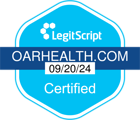How Do I Know When My Drinking Is a Problem? When Should I Seek Treatment?

In This Article
Deciding whether your alcohol consumption is at a level where you could benefit from treatment is an incredibly individual process. However you can watch out for common signs.
“Any time alcohol use rises to the point that it causes negative consequences in somebody’s life — whether that means a DUI, problems in the family, problems with a partner or spouse, difficulty functioning at work, etc. — this would be a strong indicator that treatment is needed,” says George Cameron Coleman Jr., MD, an addiction medicine physician at the University of Michigan Addiction Center — a leading treatment, prevention, and research clinic — and clinical assistant professor at Michigan Medicine.
“Other signs include changes in the way alcohol affects the body,” Coleman says. “Things like developing tolerance, experiencing withdrawal when you aren’t actively consuming alcohol, or strong cravings. And another warning sign is if you have previously tried to make a change or cut back on your own, but you had difficulty or were unsuccessful.”
If any of this rings true for you, a qualified medical professional can assess whether you have alcohol use disorder (AUD). AUD is a chronic medical condition diagnosed on a spectrum from mild to severe. Treatment is available for AUD, no matter its severity.
Are You At Risk of Alcohol Use Disorder?
According to the National Institute on Alcohol Abuse and Alcoholism (NIAAA), a division of the U.S. National Institutes of Health, men who have more than 4 alcoholic drinks a day or more than 14 drinks a week, and women who have more than 3 drinks a day or more than 7 drinks a week, have an increased risk of alcohol-related issues (1).
These numbers are helpful as a guide to when your drinking may be in unhealthy territory, yet the NIAAA also notes that every person’s response to alcohol can vary, and someone can drink less than these guidelines and still have alcohol problems.
Yes, tallying how many drinks you regularly consume in a day or a week can be a useful starting point. But there are other significant factors to consider when assessing whether your drinking has become problematic, says Stephanie Kowatch, FNP-BC, a nurse practitioner based in Reno, Nevada, and an Oar network provider.
“Are you missing workdays because you’re hungover? Have you had injuries as a result of drinking? Is a family member kicking you because drinking is causing family relationship issues? All of these are reasons to rethink your drinking,” Kowatch says.
Alcohol Use Disorder Self-Screening
If you’re concerned about your drinking, an AUD self-screen (such as Oar Health's linked here, which also includes a doctor review) can help you figure out whether you might be on the AUD spectrum.
The research-backed Alcohol Use Disorders Identification Test (AUDIT) is a simple 10-question survey about your drinking habits during the previous 12 months (2).
Developed by the World Health Organization, the AUDIT questionnaire has been in use for decades. It is very similar to the online assessment Oar uses to determine if you might be a good candidate for AUD medication.
The multiple-choice questionnaire asks things like how often you drink, how many drinks you typically consume when you do drink, as well as questions about how your drinking affects your life.
Each answer has a score from 0 to 4 points. The final tally of all 10 answers determines whether you are low risk (0 to 7 points), medium risk (8 to 15 points), high risk (16 to 19 points), or likely alcohol dependent (20 to 40 points).
“The AUDIT is very helpful,” says Damaris Grossmann, DNP, FNP-BC, HNB, a doctor of family nurse practice and an integrative health specialist in Rutherford, New Jersey, who is an Oar provider.
Even if someone already suspects on their own that they need assistance, a screen like the AUDIT can help clarify the problem and nudge them toward getting support.
Understanding Alcohol Use Disorder
The NIAAA defines AUD as “a chronic brain disorder marked by compulsive drinking, loss of control over alcohol use, and negative emotions when not drinking” (3).
As mentioned above, AUD is a spectrum disorder that’s diagnosed as mild, moderate, or severe depending on the number of symptoms you have.
AUD is a brain disorder because alcohol significantly impacts the brain.
“All substances of abuse — whether it is alcohol, opioids, or other substances — act on the ‘reward systems’ in the brain,” says Coleman of the University of Michigan.
“In the short term we experience pleasure because these substances cause dopamine levels to go up in the brain. In the long term — with months or years of continued use — there are changes in the brain that affect all sorts of things: thinking, judgment, mood, sleep, memory, etc.”
AUD is not “alcoholism.” While the terms “alcoholic” and “alcoholism” are still commonly used when discussing alcohol issues, alcoholism is not a formal medical diagnosis.
In the long history of treating alcohol problems, AUD is quite a recent diagnosis. The condition was first outlined in 2013 when the American Psychiatric Association published the fifth edition of the Diagnostic and Statistical Manual of Mental Disorders (DSM-5), the psychiatric field’s guidebook for the assessment and diagnosis of mental health conditions (4).
Before 2013, clinicians diagnosed people with drinking issues with alcohol abuse or alcohol dependence. However, people with alcohol issues were most commonly labeled “alcoholics,” and their condition labeled “alcoholism.”
“When I was in nursing school and in graduate school, we didn't call it alcohol use disorder,” says Kerri Weinstein, FNP, a family nurse practitioner with the Ascension Medical Group in Binghamton, New York, and an Oar provider. “It was always known as alcoholism, which is not the way we talk about it anymore.”
As with other brain disorders, AUD recognizes physical and psychological elements are intertwined in most people’s issues with drinking. But perhaps most importantly, the AUD diagnosis establishes that people with alcohol problems have a disorder, not a moral or personal failing.
“There are still people who are like, ‘Oh, drinking too much is just a bad habit,’” Weinstein says. “It’s not a habit, it’s a disease. So we treat it as a disease. We need to take away that stigma around it because the stigma is still so common.”
Alcohol Use Disorder: You Are Not Alone
AUD is surprisingly common, yet it remains vastly underdiagnosed and undertreated (5, 6). If you feel you have an alcohol problem, you are far from alone.
The 2019 National Survey on Drug Use and Health, conducted by the Substance Abuse and Mental Health Services Administration of the U.S. Department of Health, found that nearly 14.1 million people ages 18 or older had AUD within the previous year.
Yet the survey also found that just 7.6% of those people received any kind of treatment, and a mere 1.6% were prescribed medication to treat their AUD (7).
The number of people engaged in unsafe drinking patterns that increase their risk of AUD are much higher still.
The survey found 65.8 million people had engaged in binge drinking in the month before they were surveyed, and 16 million people engaged in heavy drinking.
Binge drinking typically corresponds to consuming 5 or more drinks in about 2 hours for men, and 4 or more drinks within that time frame for women.
Heavy drinking in men is defined as consuming 15 drinks or more per week. In women, it’s defined as having 8 drinks or more per week.
Stress and uncertainty during the COVID-19 pandemic has led many more people to engage in unhealthy drinking patterns, according to numerous studies.
A survey sponsored by the NIAAA and conducted by the independent nonprofit research institute RTI found that between February and November 2020, the number of respondents who exceeded recommended drinking guidelines increased by 39% (8).
“It’s been a disaster,” says Joshua Lee, MD, MSc, a clinician and researcher at New York University focused on medication-assisted treatment of alcohol and opioid use disorders and Oar’s chief clinical adviser, of the pandemic’s effects on alcohol consumption.
“We’ve known for years that alcohol overuse is contributing to what’s been characterized by some of the literature and media as ‘deaths of despair,’” says Lee, who is an associate professor in the departments of population health and medicine at the NYU Grossman School of Medicine, director of the NYU Fellowship in Addiction Medicine, and chief of the Lee Lab at NYU.
“Prior to COVID, alcohol contributed to an increase in the overall U.S. mortality rate and reduced life span. We think that’s accelerated through COVID and gotten even worse. So, COVID has been a disaster for substance use and for bad outcomes associated with substance use.”
Treatment Is Available
Whether you take the AUDIT self-screen to confirm your concerns regarding your drinking or you already know you need help, evidence-based treatments are available.
Medication and behavioral therapies are effective in helping people cut down on drinking or quit entirely.
Currently, the Food and Drug Administration (FDA) has approved three medications to treat AUD.
Naltrexone blocks the euphoric “buzz” one gets when drinking alcohol, which lessens cravings and helps you cut down or quit. (Oar provides naltrexone to people cleared to take the medication by a qualified healthcare provider.)
Acamprosate may be prescribed to people who’ve already stopped drinking alcohol to help curb cravings.
Disulfiram causes people to become violently ill if they drink alcohol (e.g., nausea, vomiting, headaches, dizziness), which can help them quit.
In addition to medication, peer support groups, counseling or psychotherapy, and behavioral modifications like cognitive behavioral therapy can help many people cut down on and quit alcohol.
“Some people need more support because they don’t realize that they actually have another mental condition in addition to their alcohol problem,” says Grossmann. “People may be drinking to cope with anxiety or depression. How serious those issues are in addition to just their drinking is a factor.”
A qualified healthcare provider can screen and diagnose AUD as well as prescribe medication.
But as Kerri Weinstein points out, “A lot of people are ashamed and embarrassed about their drinking,” and therefore they may be reluctant to seek assistance.
Worries over impacts to insurance coverage or notes about alcohol use in medical records also may stop people from getting treatment.
The Evolution of Treatment
Just as treatment for alcohol problems has evolved over time, so has the way treatment is delivered.
A service such as Oar confidentially screens people for AUD, connects them with a provider online who can prescribe medication if they qualify for it, educates them about AUD, and recommends additional supportive treatment options.
“When you make treatment accessible to someone, and it’s safe, and you give them all of the criteria, people are more willing to try,” says Grossmann
About The Author
Ian Landau is a journalist who's written extensively about health and wellness since 2010. He is also the author of The Hypochondriac's Handbook (Skyhorse, 2010).






